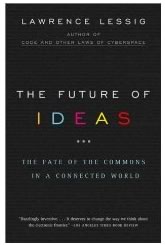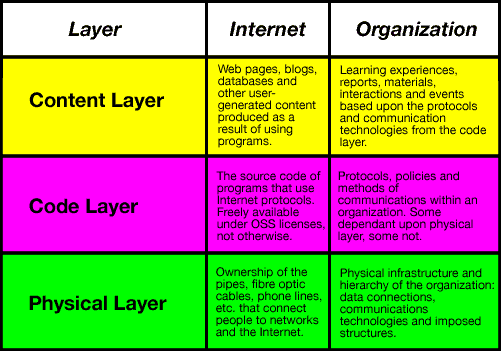Are organizations like brains?
 As part of my Ed.D. course through the University of Durham I had to take some taught modules. One of them that I took back in 2006 was entitled Management, Leadership & Change. It was an excellent course from which I gained a lot. Unfortunately, unlike many of my classmates, I wasn’t then at a time where I could use this knowledge being then only just finished my second year of teaching. Now that I’m in a position that carries more responsibility, management responsbilities and leadership opportunities, it’s time to revisit that course and related reading.
As part of my Ed.D. course through the University of Durham I had to take some taught modules. One of them that I took back in 2006 was entitled Management, Leadership & Change. It was an excellent course from which I gained a lot. Unfortunately, unlike many of my classmates, I wasn’t then at a time where I could use this knowledge being then only just finished my second year of teaching. Now that I’m in a position that carries more responsibility, management responsbilities and leadership opportunities, it’s time to revisit that course and related reading.
One of the books I read for the Management, Leadership & Change module was Gareth Morgan’s Images of Organization. I found it a revelation, especially being so fond as I am of metaphor. Morgan uses eight metaphors as a lens through which to view organizations:
- Organizations as Machines
- Organizations as Organisms
- Organizations as Brains
- Organizations as Cultures
- Organizations as Political Systems
- Organizations as Psychic Prisons
- Organizations as Flux and Transformation
- Organizations as Instruments of Domination
Each of these perspectives teaches the reader something about organizations; it’s a very clever and interesting way of presenting insights.
Having just come across this neat overview of Daniel Goleman‘s idea of the various leadership styles, I wonder how much overlap/synergy there is between the two?

I’m especially interested in the idea of organizations as ‘organisms’, ‘brains’ or ‘cultures’ as I believe these lenses to be the most powerful for effecting positive change. The remainder of this post will look at organizations as ‘brains’.
Organizations as brains
Morgan starts off the chapter comparing brains to holographs where ‘everything is enfolded in everything else’, there is not centre or point of control and, most importantly,
Pattern and order emerge from the process – it is not imposed. (Morgan, 1998:73)
The philosopher Daniel Dennett, someone who I read fairly widely at university during my undergraduate degree in Philosophy, suggests that our highly-ordered stream of consciousness is actually the result of ‘a more chaotic process where multiple possibilities are generated as a result of activity distributed throughout the brain.’ (ibid.) Competing parallel activities can make complementary and competing contributions into a coherent pattern.
‘Just In Time’ and perceived chaos
Morgan gives the example of ‘Just In Time’ (JIT) manufacturing as being a process that is highly organized yet without ‘boundaries and patterns of membership’:
To an outsider, it may be impossible to distinguish who is working for whom. The fundamental organization really rests int eh complex informaiton system that coordinates the activites of all the people and firms involves rather then the discrete organizations contributing different elements to the process. (Morgan, 1998:75)
 The above leads Morgan to wonder whether it is better to refer to a ‘system of intelligence’ rather than an ‘organization’ when describing such states of affairs. These systems break what Herbert Simon, Nobel laureate, called the ‘bounded rationality’ of human beings. To my mind it’s Morgan picking up on the start of what Clay Shirky has shown to be completely revolutionary in his excellent Here Comes Everybody (which I’m currently reading).
The above leads Morgan to wonder whether it is better to refer to a ‘system of intelligence’ rather than an ‘organization’ when describing such states of affairs. These systems break what Herbert Simon, Nobel laureate, called the ‘bounded rationality’ of human beings. To my mind it’s Morgan picking up on the start of what Clay Shirky has shown to be completely revolutionary in his excellent Here Comes Everybody (which I’m currently reading).
Understanding how organizations can become capable of learning in a brain-like way is similar to understanding how robots and other objects in the study of Cybernetics are able to ‘learn’. The latter discipline involves negative feedback. That is to say error-detection and correction happens automatically to maintain a course towards a desired goal. In order to be able to self-regulate, systems must be able to:
- Sense, monitor, and scan significant aspects of their environment.
- Relate this information to the operating norms that guide system behavior.
- Detect significant deviations form these norms, and
- Initiate corrective action when discrepancies are detected. (Morgan, 1998:77)
This negative feedback system is only as good as the procedures and standards that underlie it. So long as the action defined by these procedures and standards is appropriate dealing with the changes encountered, everything is fine. The ‘intelligence’ of the system breaks down, however, when these are not adequate leading to negative feedback attempting to maintain an inappropriate pattern of behaviour.
In order to prevent the above happening (so called ‘single-loop learning’) the model of ‘double-loop learning’ has been promoted by Donald Schön and Chris Argyris. This builds in a self-review ‘loop’ to the learning process:

Image cc-by-sa Ed Batista
There are three major barriers to double-loop learning: budgets, bureaucracy and accountability. One of the most famous examples of double-loop learning and organization being thwarted by these three barriers came with the US Challenger space shuttle explosion.
Learning organizations
So, how are ‘learning organizations’ created? Insights from cybernetics would suggest the following:
- Scanning and anticipating change in the wider environment
- Developing an ability to question, challenge and change operating norms and assumptions
- Allow appropriate directions and patterns of organization to emerge (Morgan, 1998:82)
Morgan follows this with stressing the importance of ‘framing and reframing’ which reminds me of Lord Bilimoria’s discussion of the value of regular SWOT analyses (see this post). ‘Many organizations,’ says Morgan, ‘become myopic, accepting their current reality as the reality.’ (Morgan, 1998:84)
Organizations that embrace double-loop learning sound like the type of places I want to be part of:
For successful double-loop learning to occur, organizations much develop cultures that support change and risk taking; embrace the idea that in rapidly changing circumstances with high degrees of uncertainty, problems and errors are inevitable; promote an openness that encourages dialogue and the expression of conflicting points of view; recognize that legitimate error, which arises from the uncertainty and lack of control in a situation, can be used as a resource for new learning; recognize that since genuine learning is usually action based, organizations must find ways of helping to create experiments and probes so that they lear through doing in a productive way. (Morgan, 1998:85)
Emergent organization
Coming back to the metaphor of brains, the intelligence of the brain is not predetermined. It is not centrally driven. It is emergent. A top-down approach to management leads to single-loop learning and therefore is the opposite of such a model of emergence. To prevent chaos and incoherence targets should take the form of vision and value-sharing.
Morgan continues on to articulate a vision of ‘holographic organization’ based on five principles:
- Build the ‘whole’ into the ‘parts’ (i.e. ‘networked intelligence’)
- The importance of redundancy
- Requisite variety (i.e. ‘internal complexity must match that of the environment’)
- Minimum Specs (i.e. don’t define more that is absolutely necesssary)
- Learn to learn (i.e. ‘double-loop learning’)
Conclusion
After fleshing out these princples, Morgan concludes this chapter with listing the strengths and limitations of the brain metaphor.
Strengths:
- Gives clear guidelines for creating learning organizations
- Shows how IT can support the evolution of organizations
- Gives a new theory of management based on the principles of self-organization
- Addresses the importance of dealing with paradox
Limitations:
- There could be conflict between the requirements of organizational learning and the realities of power and control
- Learning for the sake of learning can become just another ideology
I can live with these limitations. I think the ‘organization as brain’ metaphor has a lot going for it. What do YOU think? 😀



![Reblog this post [with Zemanta]](http://img.zemanta.com/reblog_e.png?x-id=c9bef5bd-2324-425e-942f-0c532de12ce5)
 I’ve spent this afternoon and early evening at a ‘tweetmeet’. These are also known as ‘tweetups’ and are when people who have previously only met, or usually communicate, through the microblogging service Twitter meet up face-to-face. I’d actually met
I’ve spent this afternoon and early evening at a ‘tweetmeet’. These are also known as ‘tweetups’ and are when people who have previously only met, or usually communicate, through the microblogging service Twitter meet up face-to-face. I’d actually met  Michael Thompson, author of
Michael Thompson, author of 
![Reblog this post [with Zemanta]](http://img.zemanta.com/reblog_e.png?x-id=1b66070c-4dc5-47a3-ba33-2301c3ee4ed2)